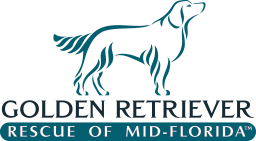Understanding and respecting growling
Effective communication and redirection techniques for dogs
Remember that growling (or even further displays of behavior such as barking or lunging) is an important communication signal for dogs. We do not want to “correct” or punish a dog for growling, as that is akin to “taking the batteries out of a smoke alarm.” Recognize that if your dog is growling, they are showing normal dog communication when they are uncomfortable with something. Respect the growl, give a neutral response, and then redirect your dog by using a “Positive Interrupter” (see section above) or by using the “Instruct and Reinforce” protocol (i.e. cue your dog to do a well-known behavior such as a hand “Touch,” go to their “Place,” etc, then reinforce them with food from one of your treat jar stations distributed around the house).
“Wait, so are we rewarding the growl?”
No – we’re taking a negative situation, re-directing the dog, and making it positive! And in some ways, you’re rewarding the dog for giving a clear warning signal that they are uncomfortable and are using nuanced communication and are not biting! Working with your dog on becoming very proficient and confident with a variety of “positive interrupter” cues will give you the tools to effectively redirect their behavior and give them something else to focus on (and get reinforced for!) when they are showing discomfort around a “trigger.” The stronger your “positive interrupter cue” and other redirection behaviors are, the more easily you will be able to use them to redirect and diffuse tension when it really counts.
Being proactive rather than reactive
Remember, ideally, we want to be proactive rather than reactive. This means working a lot on exercises that change your dog’s emotional response to a person approaching or walking past your dog when he is settled and resting. We want him to learn that people approaching or walking past him when he is settled leads to great things for him!
Notice the body language leading up to growling or lunging (and redirect or change your approach before the behavior escalates
Dogs have a lot of nuanced and subtle body language signals that they give that are very easy to miss unless you really know what to look for. Sometimes the signals can be so subtle that you can be sitting nearby and not realize anything is going on unless you are really watching for it. Resource guarding (or handling sensitivity) is no different, and there can be many subtle signals given prior to an actual growl, lunge, and/or bite. If your dog has shown you that they will escalate to an aggressive display if they feel the need to “protect” a valued resource (like a resting spot, crate, couch, etc), or if they are uncomfortable with being handled in certain contexts, it is especially important to pay attention to these subtle signals in their body language.
Example: interrupting a potential “hot zone”
Example: Your dog has an item they “shouldn’t” have, and they stiffen a bit and hold their head over the item as the other dog (or a person) walks past. You quickly interrupt with a happy “positive interrupter” cue (i.e. “Let’s Go!”) and call them to the treat jar station placed strategically somewhere in the house. In this case, you are interrupting a potential “hot zone” and you are re-directing and rewarding them for coming with you. If the item the dog had is not immediately dangerous (it usually isn’t!), you should act like you really don’t care about the item at all. You might call the dog away with a “positive interrupter” several times back and forth, letting them return to the item each time. Then, when the novelty has worn off and they don’t care about/aren’t thinking about the item anymore, that is the time you could take it and put it away.
